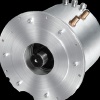Индустриален клъстер "Електромобили" - Учредители:








 |

|

|
| Актуално | За клъстера | Екип | Членове | Документи | Анализи | Услуги | Стани член | Награди | ССЕМ | Контакти |
ИКЕМ - Индустриален клъстер "Електромобили" | Вторник, 04.11.2025 | |
|
Business History of electric cars, 1885–1914
In the early days of automotive history electric vehicles were popular and sold well compared with what were seen as noisy and inconvenient early internal combustion vehicles (American Technical Society, 1922). In 1910, in London there were some 6000 electric cars and 4000 commercial vehicles registered (Electric Vehicle Association, 1991), and in its heyday the electric fleet in America grew to over 20,000 vehicles. However the vogue for private electric cars passed quickly so that ‘the gentle electric’ with its silent motor ‘came to be associated with senior citizens’ and ‘lost the imagination of the public’ (Hughes, 1996). Thus by the beginning of the 1914–18 world war the petrol engine had firmly established its dominance (Electric Vehicle Association, 1991; Flink 1988; Nasar, 1982) and by 1933 the number of electric vehicles was down to near ‘zero’ (Nasar, 1982). Literature concerning the failure of the early electric car points to the importance of touring and the difficulties associated with performing this activity for electric automobiles owing to their limited range and power. Supporters of the electric automobile point out however that the characteristics of the electric car meant that it could (even ought) to have served perfectly adequately in some market niches, for example amongst women and business users of the time, in urban settings (see for example Kirsch, 2000; Mom, 2004; Scharff, 1991). Anyone, indeed, who cared about ease of use, wanted or needed to stay clean and did not require a machine for long distance touring on poor roads would potentially have been well served by the electric automobile. Yet, with the exception of cars for commercial use (local deliveries, taxis), electric cars never sold well compared to petrol-engine variants (Scharff, 1991). Whilst authors have noted this paradox, and have offered some reasons related to the difficulties of charging and over-promising on future technological advances, the underlying reasons for this failure have not been satisfactorily explained. Our contribution to the debate is to revisit this history by offering a novel account drawing both on notions of symbolic consumption and signification, and ideas about technological lockout. In doing so we follow Lipartito (1995) in recognising the need for business historians to treat socio-cultural processes seriously as influential upon tastes and consumption patterns, and thence the success of new objects. Having said this, the paper addresses the complementarity of material, systemic and socio-cultural phenomena associated with diffusion (or non diffusion) of rival automobile designs, in contrast with previous accounts which have ultimately risked over-emphasising technical explanations. The focus of this paper is upon the construction of meaning around the car during the late nineteenth and early twentieth centuries, and the role played by this in the ‘lockout’ of the private electric car. The paper addresses the following empirical questions. (i) What did electric and other automobile designs come to mean to early users? (ii) What factors are implicated in the construction of such meanings as became associated with the early car? (iii) What role did such factors play in the lockout of the electric car from various market niches that it could potentially have served? It is argued that the construction of meaning around the car occurred with the production and reproduction of car culture associated with the almost exclusive use of private automobiles by wealthy male users for touring and cross-country racing. Sales of cars came to rely upon their being able to meet the performance standards and characteristics set by wealthy male elites for touring and racing – even if they were not actually used for those activities by their owners. Meanwhile cars propelled by the internal combustion engine came to be defined as quintessential symbols of an emerging ‘car culture’. The paper is structured as follows. First, the next section presents a detailed review of relevant literature on the topics of the meaning and consumption of objects, signification, and ‘technology lockout’. There then follows a section discussing the early history of the automobile, informed by thinking about symbolic consumption and wary of overly technical explanations of the failure or success of developmental trajectories. This discussion is based on a reinterpretation of existing literature and on insights gained from relevant archive data unearthed by the authors, which is contemporaneous with the historical period under scrutiny. The final section summarises the work and contribution of the paper to understanding the role of symbolic consumption and signification in the technological lockout and history of the electric automobile. |
Продукти 
Комплектна система за задвижване на електромобилиСистемата за електрозадвижване обхваща гама с три основни типоразмера на ел. мощност със съответните компоненти - електромотор и контролер. oще ...Виж всички продуктиАнкета с продължение...
|
|
|
 ЕВРОПЕЙСКИ СЪЮЗ Европейски фонд за регионално развитие Инвестираме във вашето бъдеще |
 |
 ОПЕРАТИВНА ПРОГРАМА „Развитие на конкурентоспособността на българската икономика” 2007-2013 www.opcompetitiveness.bg |
|
Интернет страницата е създадена с финансовата подкрепа на ЕФРР, в рамките на проект „Развитие на Индустриален Клъстер Електромобили” по ДБФП К-02-2/28.09.2011 г. |
|||